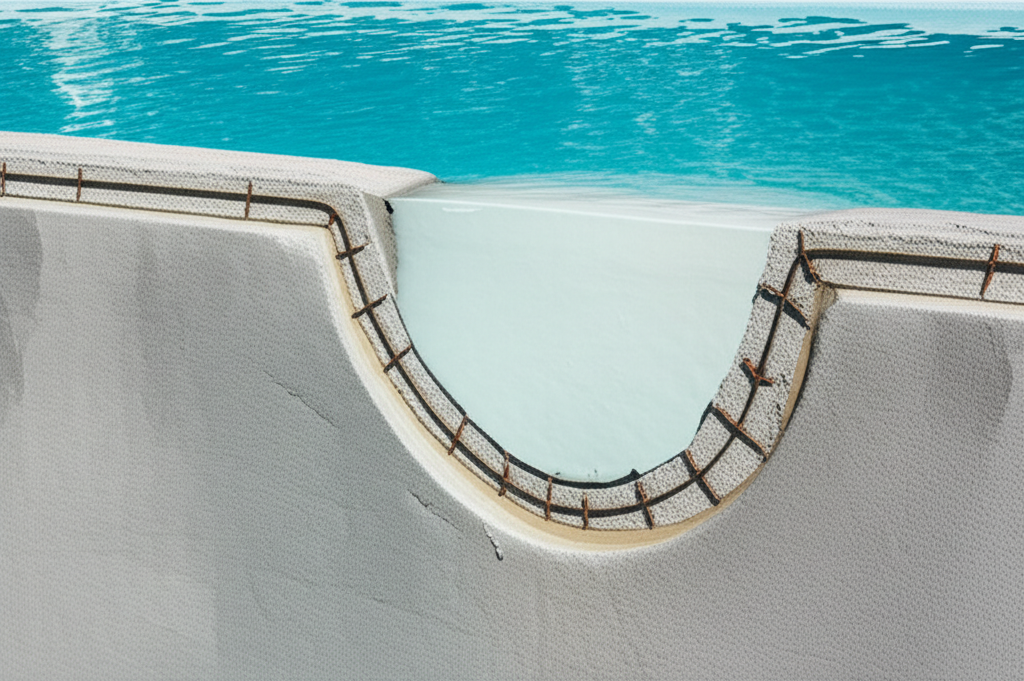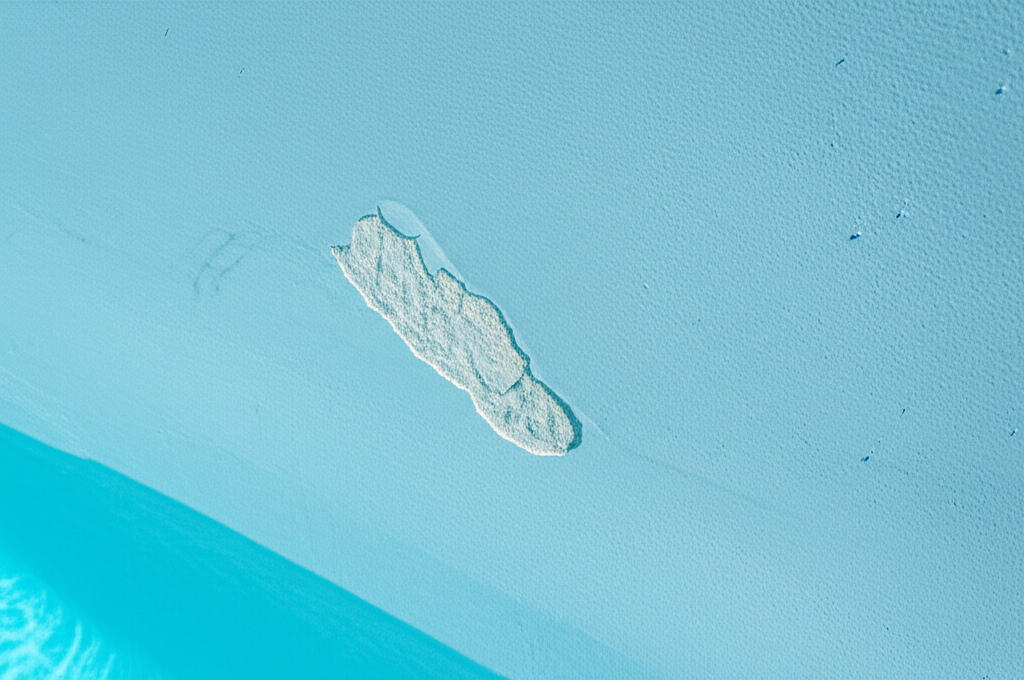- Understanding Pool Plaster Delamination
- The Core Causes of Pool Plaster Delamination
- Inadequate Surface Preparation
- Improper Plaster Application Techniques
- Rapid Drying and Curing Issues
- Poor Water Chemistry Management
- Preventing Pool Plaster Delamination: A Proactive Approach
- 1. Choose a Reputable Pool Plastering Contractor
- 2. Emphasize Thorough Surface Preparation
- 3. Demand Adherence to Best Plastering Practices
- 4. Implement Controlled Curing Procedures
- 5. Prioritize Proper Pool Start-Up Chemistry
- 6. Maintain Balanced Water Chemistry Going Forward
- Early Detection of Delamination
- Conclusion
Pool Plaster Delamination is a serious and potentially costly issue that can plague swimming pools, compromising both their aesthetics and structural integrity. Understanding this phenomenon, its underlying causes, and, most importantly, how to prevent it, is crucial for any pool owner or prospective builder. This expert guide will walk you through everything you need to know to avoid the headache of pool plaster delamination.
Understanding Pool Plaster Delamination

Essentially, pool plaster delamination refers to the separation of the plaster finish from the concrete shell (gunite or shotcrete) underneath, or the separation of layers within the plaster itself. Instead of forming a monolithic, durable surface, the bond breaks down, leading to visible and often tactile signs of distress.
When delamination occurs, you might notice hollow-sounding areas beneath the surface when tapped, or see blisters, bubbles, and cracks forming. Eventually, these areas can flake off, exposing the underlying concrete and creating an unsightly, rough, and potentially sharp surface. Beyond the obvious aesthetic damage, delamination can also lead to more serious problems, including water leaks if the exposed concrete is compromised, and significant repair expenses.
The Core Causes of Pool Plaster Delamination
Delamination is rarely due to a single factor but often a combination of issues stemming from poor workmanship, improper materials, or inadequate curing and water chemistry management. Here are the primary culprits:
Inadequate Surface Preparation
One of the most common reasons for failure is a poorly prepared substrate. If the gunite or shotcrete shell is not thoroughly cleaned of dirt, dust, oil, or loose debris before plaster application, the plaster will not form a strong, lasting bond. Similarly, if an old plaster finish is being re-plastered over, insufficient removal of the old layers or a lack of proper etching and bonding agents can lead to delamination between the new and old plaster.
Improper Plaster Application Techniques
The way plaster is mixed and applied plays a critical role in its longevity.
Incorrect Water-to-Cement Ratio: Too much water in the mix weakens the plaster, making it less durable and more prone to shrinkage and bond failure.
Varying Thickness: Inconsistent application thickness can create stress points, especially in areas where the plaster is too thin or too thick, leading to cracking and delamination.
Dry Substrate: Applying plaster over a dry, unprimed concrete shell can cause the shell to rapidly absorb water from the plaster mix, leading to an incomplete hydration process and a weak bond. A bonding agent or proper pre-wetting is essential.
Insufficient Troweling: Proper troweling is necessary to compact the plaster and achieve a smooth, dense finish. Poor troweling can leave voids and weak areas susceptible to water penetration and delamination.
Rapid Drying and Curing Issues
Plaster requires a controlled curing environment to develop its full strength.
Hot, Windy Conditions: Applying plaster in hot, windy conditions without proper protection can cause the surface to dry too quickly, leading to shrinkage cracks and a weak bond before the plaster has properly hydrated.
Improper Pool Start-Up: How a pool is filled and treated in its initial days is vital. Filling the pool too quickly or with unbalanced water can shock the new plaster. Aggressive water (low pH, low calcium hardness) will leach calcium from the fresh plaster, weakening its surface and bond.
Poor Water Chemistry Management
Beyond the initial start-up, consistent, balanced water chemistry is paramount throughout the pool’s life. Water that is consistently aggressive (low Langelier Saturation Index or LSI) will slowly etch away at the plaster, compromising its integrity and potentially the bond to the substrate. Conversely, scale formation from high LSI can also create problems, though delamination is more often tied to aggressive water.
Preventing Pool Plaster Delamination: A Proactive Approach
Avoiding pool plaster delamination begins with informed decisions and meticulous execution.
1. Choose a Reputable Pool Plastering Contractor
This is arguably the most crucial step. Seek out contractors with a proven track record, excellent references, and proper licensing and insurance. An experienced professional will understand the nuances of surface preparation, mix ratios, application techniques, and proper curing specific to your climate. Don’t base your decision solely on price; quality workmanship is an investment that pays off in the long run.
2. Emphasize Thorough Surface Preparation
Ensure your contractor commits to meticulous surface preparation. For new builds, this means a clean, sound concrete shell. For replasters, it involves complete removal of old, loose, or delaminated plaster, followed by proper etching, cleaning, and the application of a high-quality bonding agent. The bonding agent facilitates a stronger mechanical and chemical bond between the old and new surfaces.
3. Demand Adherence to Best Plastering Practices
A skilled plastering crew will follow industry best practices:
Correct Plaster Mix: Using the right blend of cement, aggregate, and additives, with the correct water-to-cement ratio.
Proper Substrate Wetting: Pre-wetting the shell or using a bonding agent to ensure the shell doesn’t prematurely draw moisture from the plaster mix.
Uniform Application: Applying the plaster in a consistent thickness, typically around 3/8 to 1/2 inch, to ensure uniform curing and strength.
Skilled Troweling: Expert troweling to compact the plaster, remove air voids, and create a dense, smooth, and durable finish.
4. Implement Controlled Curing Procedures
After plastering, the pool must be filled correctly, typically within hours of completion, to begin the crucial “hot start” curing process. Even before filling, for warm climates, shading the pool from direct sun and wind can prevent rapid surface drying.
5. Prioritize Proper Pool Start-Up Chemistry
This is non-negotiable for new plaster. The pool needs to be filled with water, and specific chemicals must be added and monitored daily for the first week to 10 days. The goal is to immediately balance the water chemistry, specifically targeting calcium hardness, total alkalinity, and pH, to achieve a positive LSI. This prevents the new plaster from being “hungry” for calcium and sacrificing its surface. Your contractor should provide a detailed start-up protocol.
6. Maintain Balanced Water Chemistry Going Forward
After the initial start-up, ongoing vigilance with water chemistry is key. Regular testing and adjustment of pH, alkalinity, and calcium hardness will ensure the water remains balanced (neutral to slightly positive LSI), protecting the plaster from long-term etching and deterioration.
Early Detection of Delamination
While prevention is best, occasionally issues can arise. Learning to identify early signs can save you from more extensive repairs.
Sound Test: Lightly tap various areas of your pool plaster with a plastic hammer or the butt of a screwdriver. Listen for a dull, hollow sound, which can indicate delamination underneath, as opposed to the solid sound of well-bonded plaster.
Visual Inspection: Look for small blisters, areas of discoloration that appear different from the surrounding plaster, hairline cracks that spiderweb or seem to lift chunks of plaster, or any areas that feel unusually soft or brittle.
Conclusion
Pool plaster delamination is a preventable issue, largely stemming from a lack of attention to detail during the construction or replastering phase and improper water chemistry management. By investing in a qualified contractor, understanding the critical steps involved in proper plaster application and curing, and diligently maintaining your pool’s water chemistry, you can significantly reduce the risk. Protecting your pool’s plaster finish means protecting its beauty, longevity, and your enjoyment of this valuable backyard asset.



